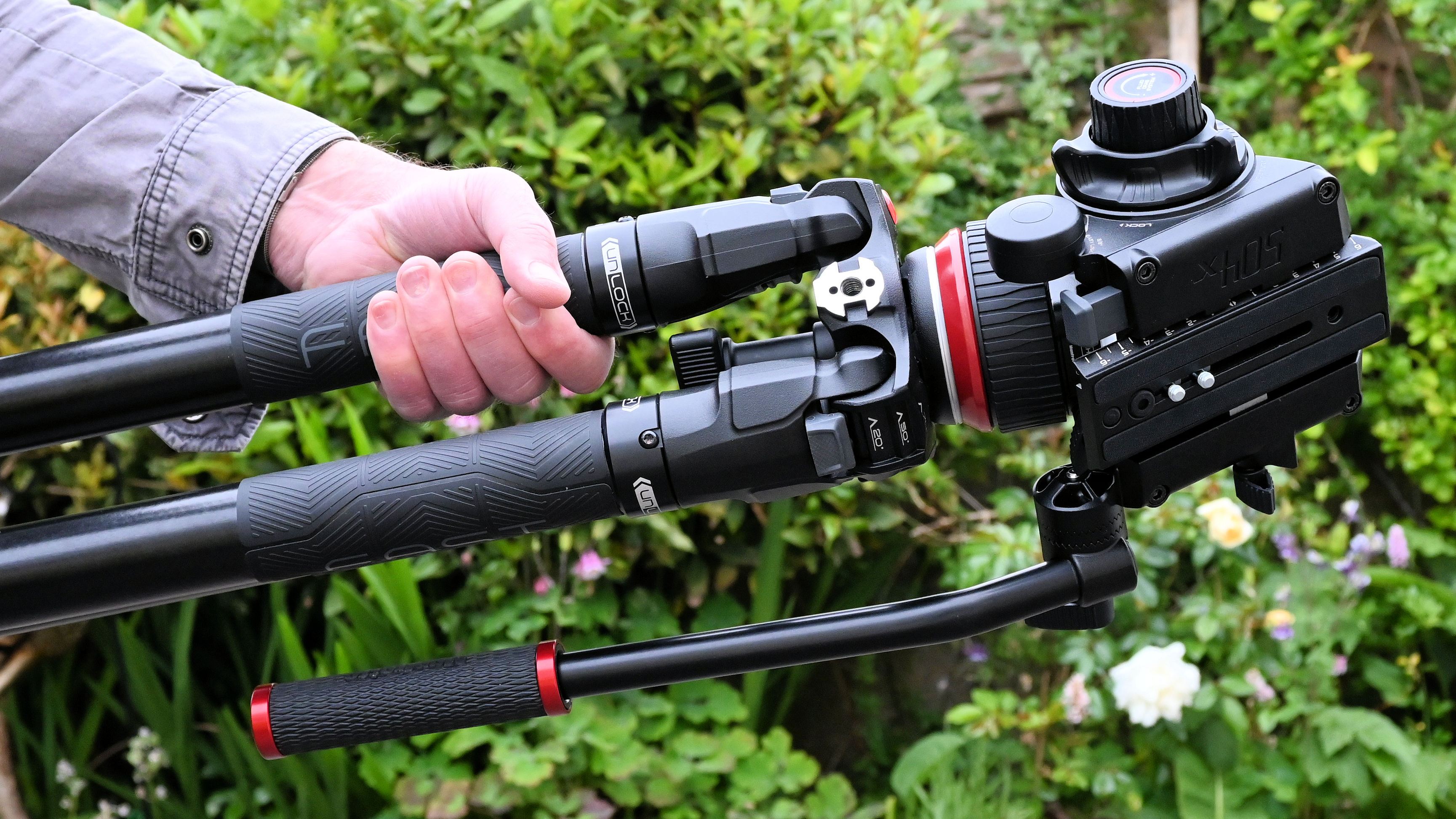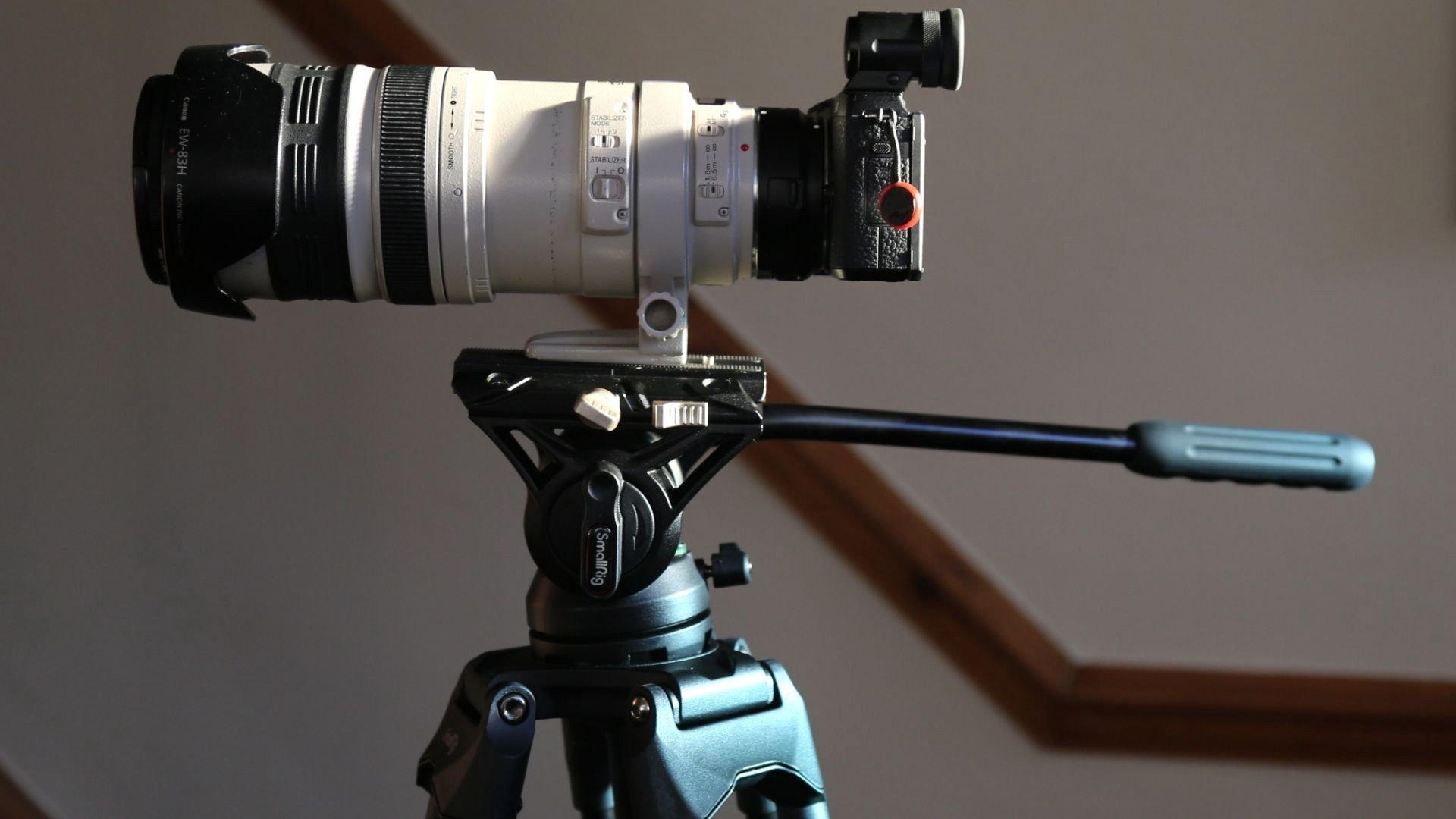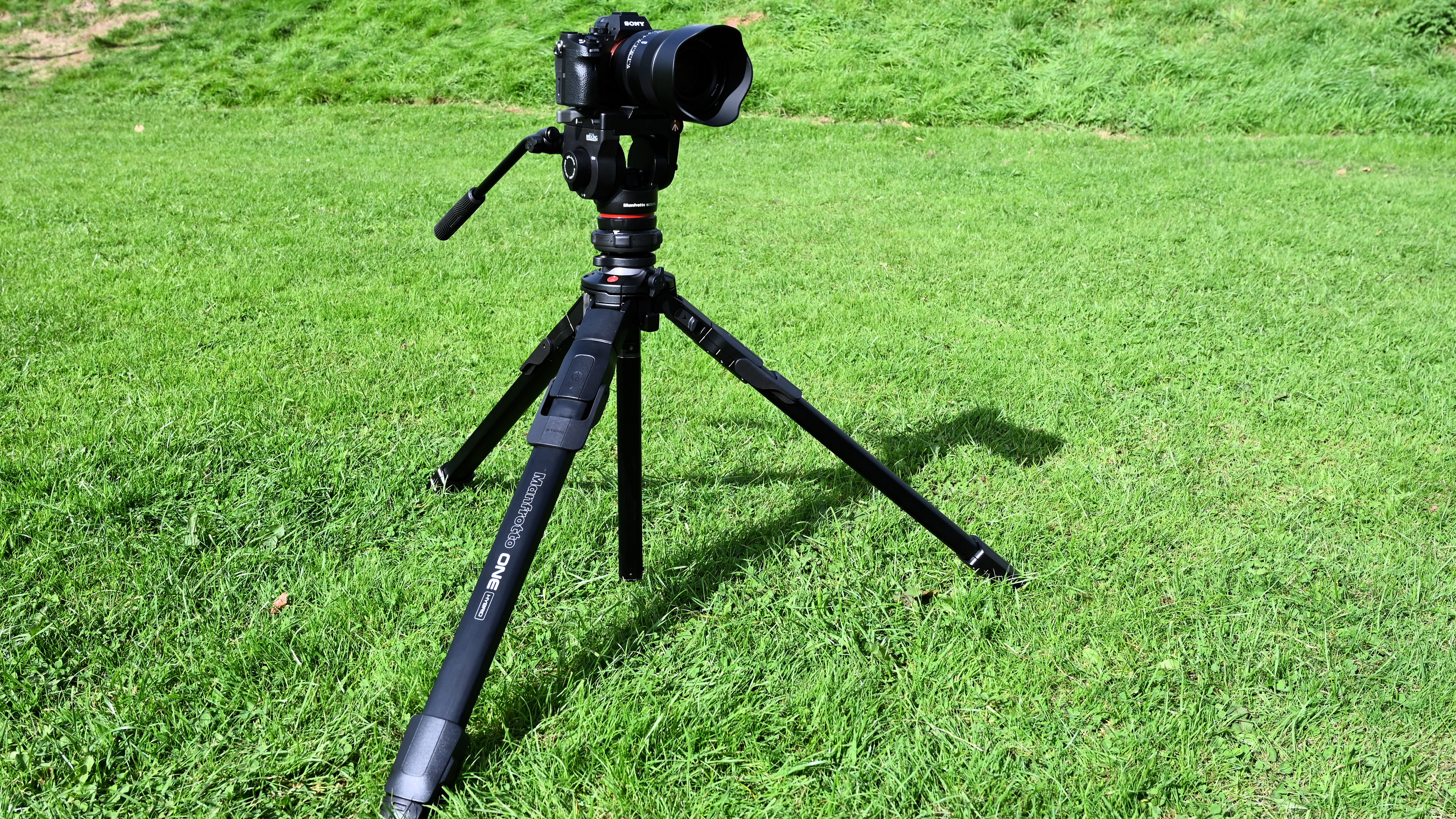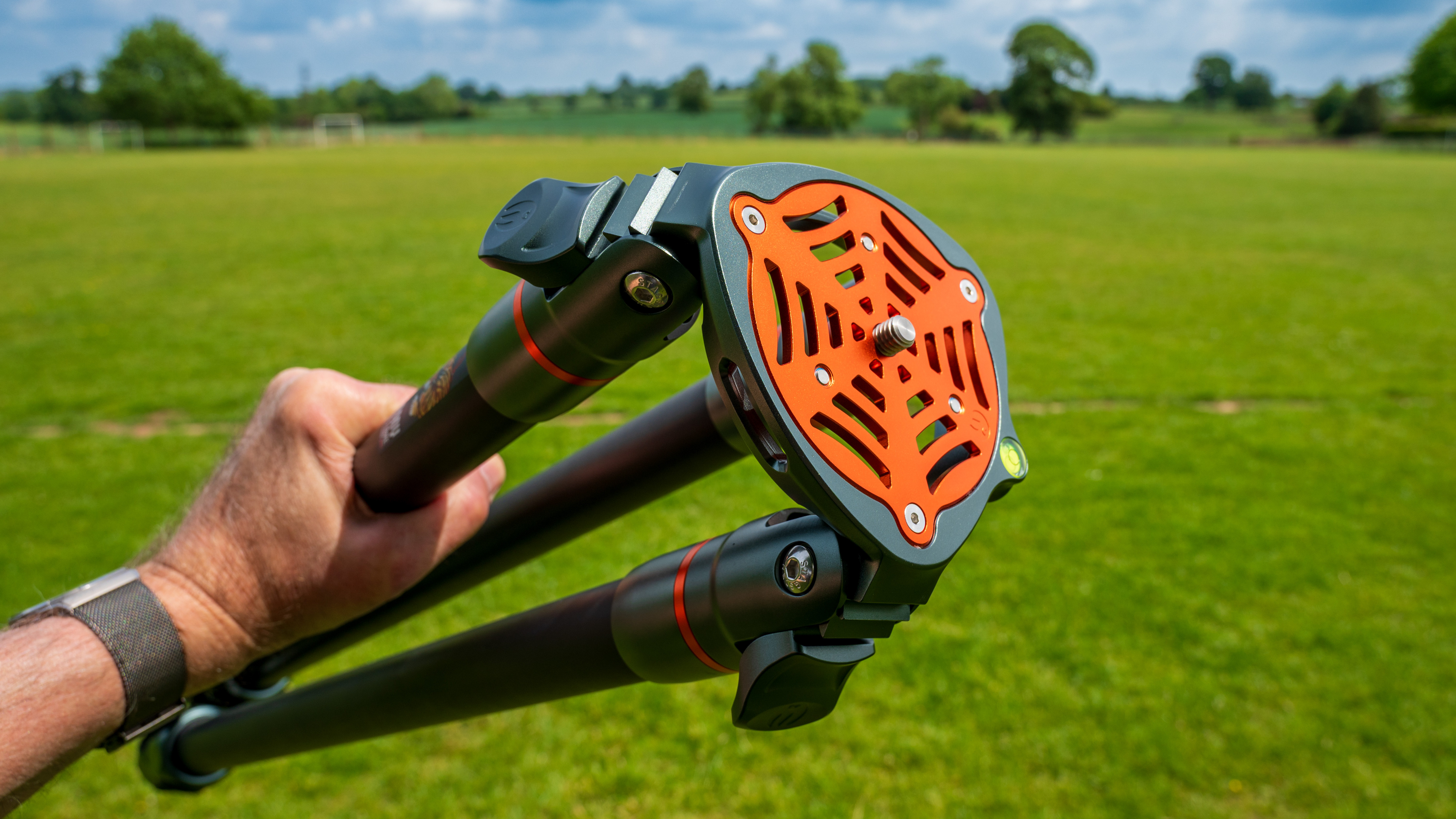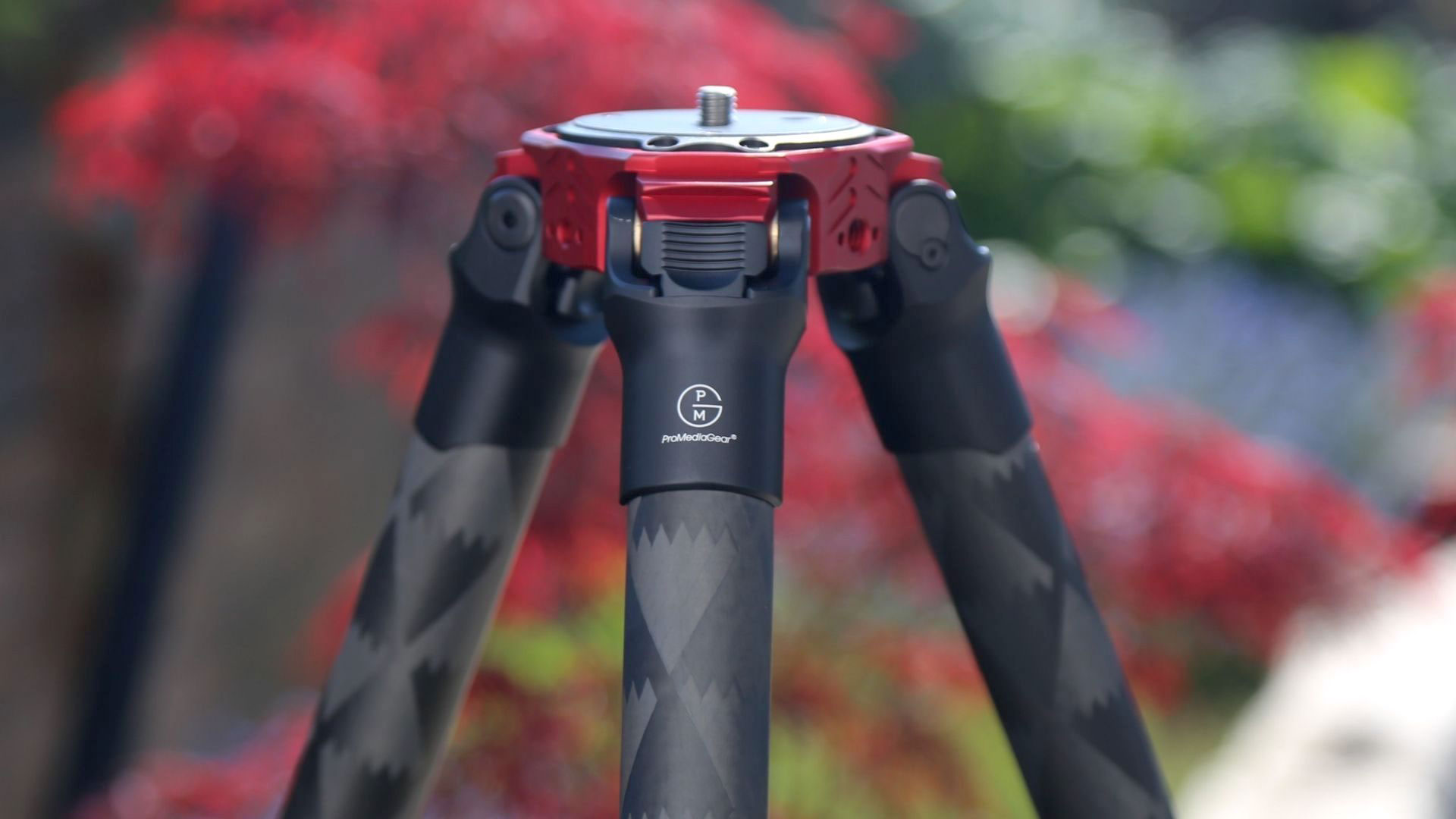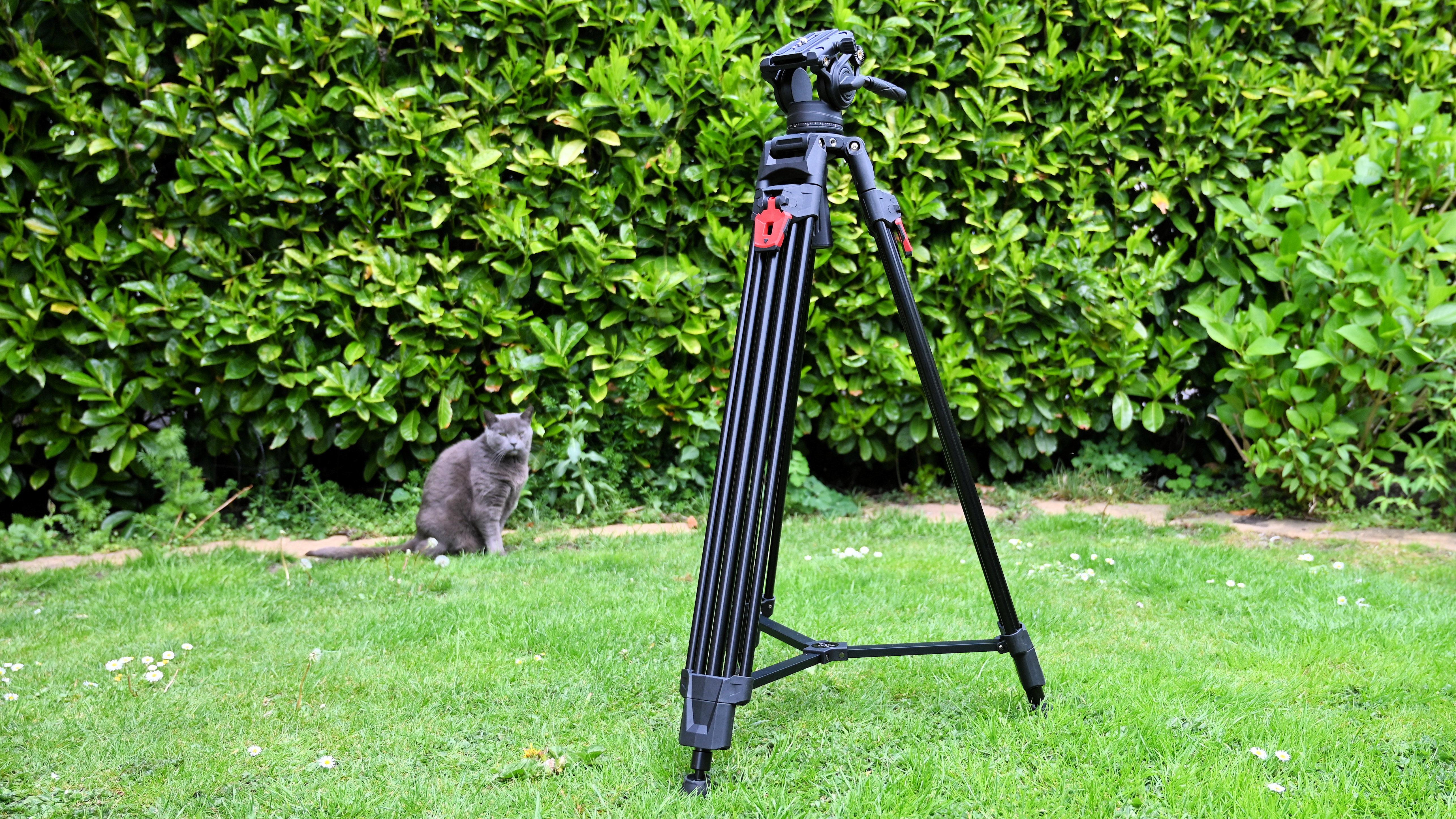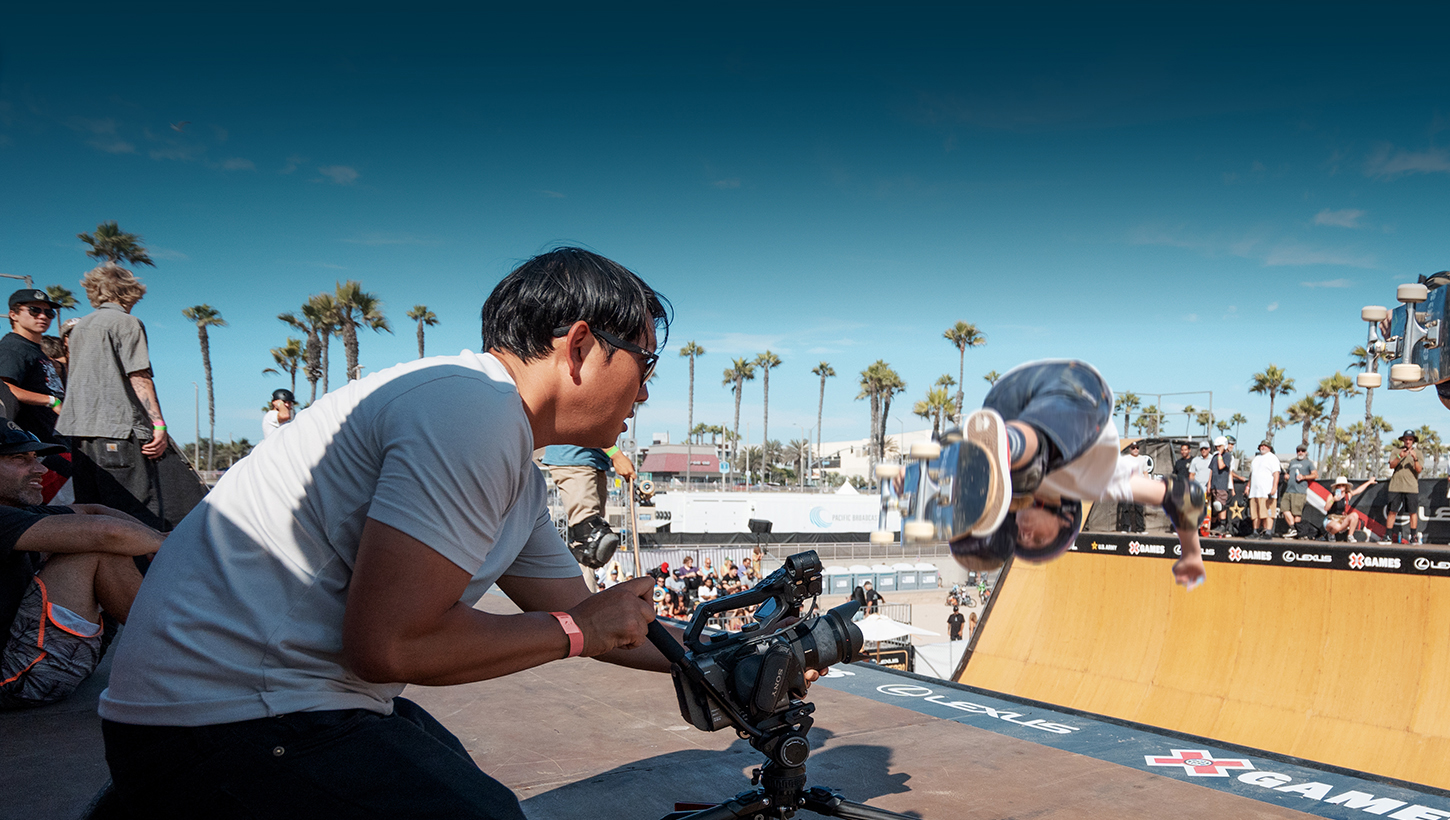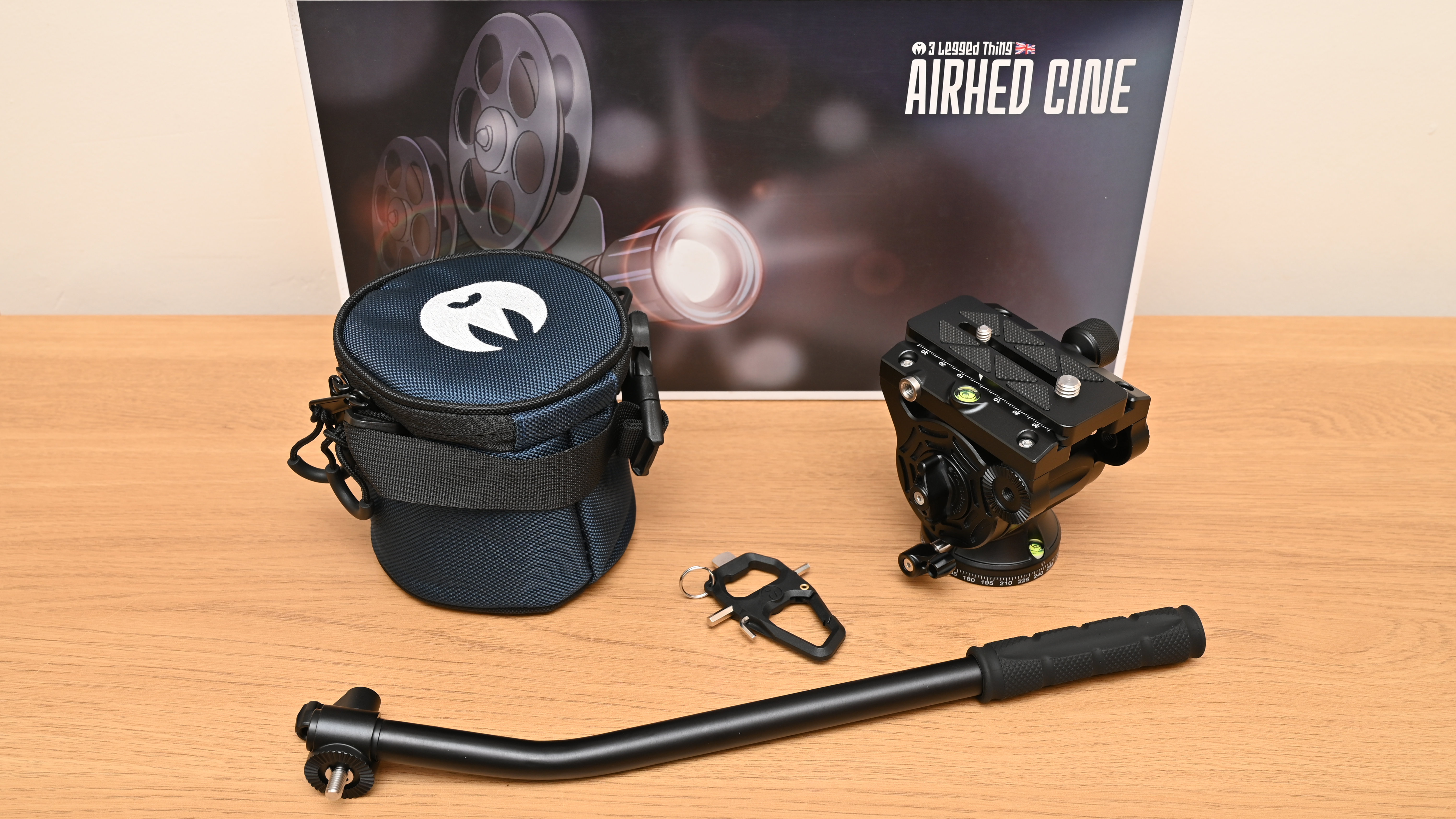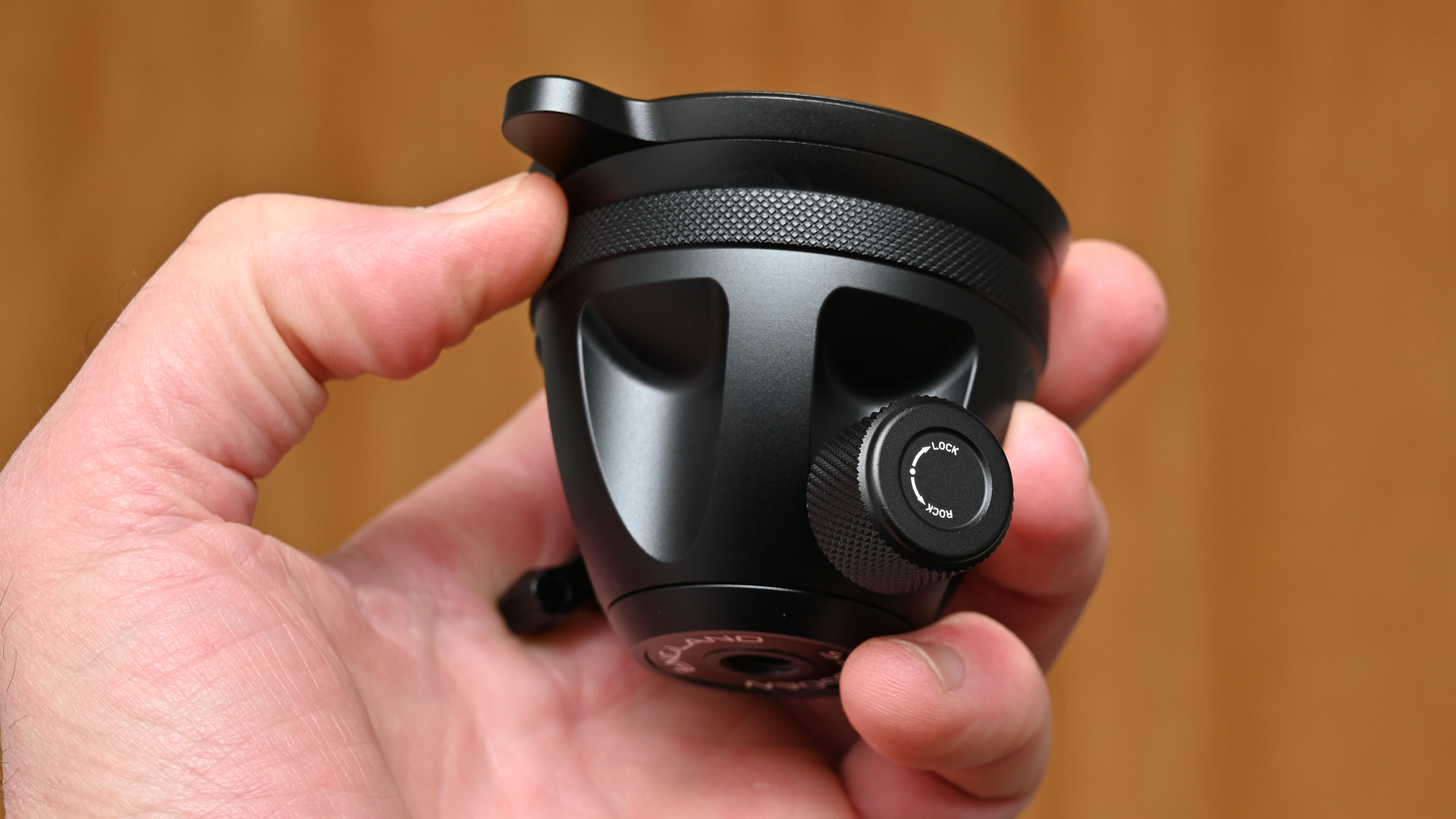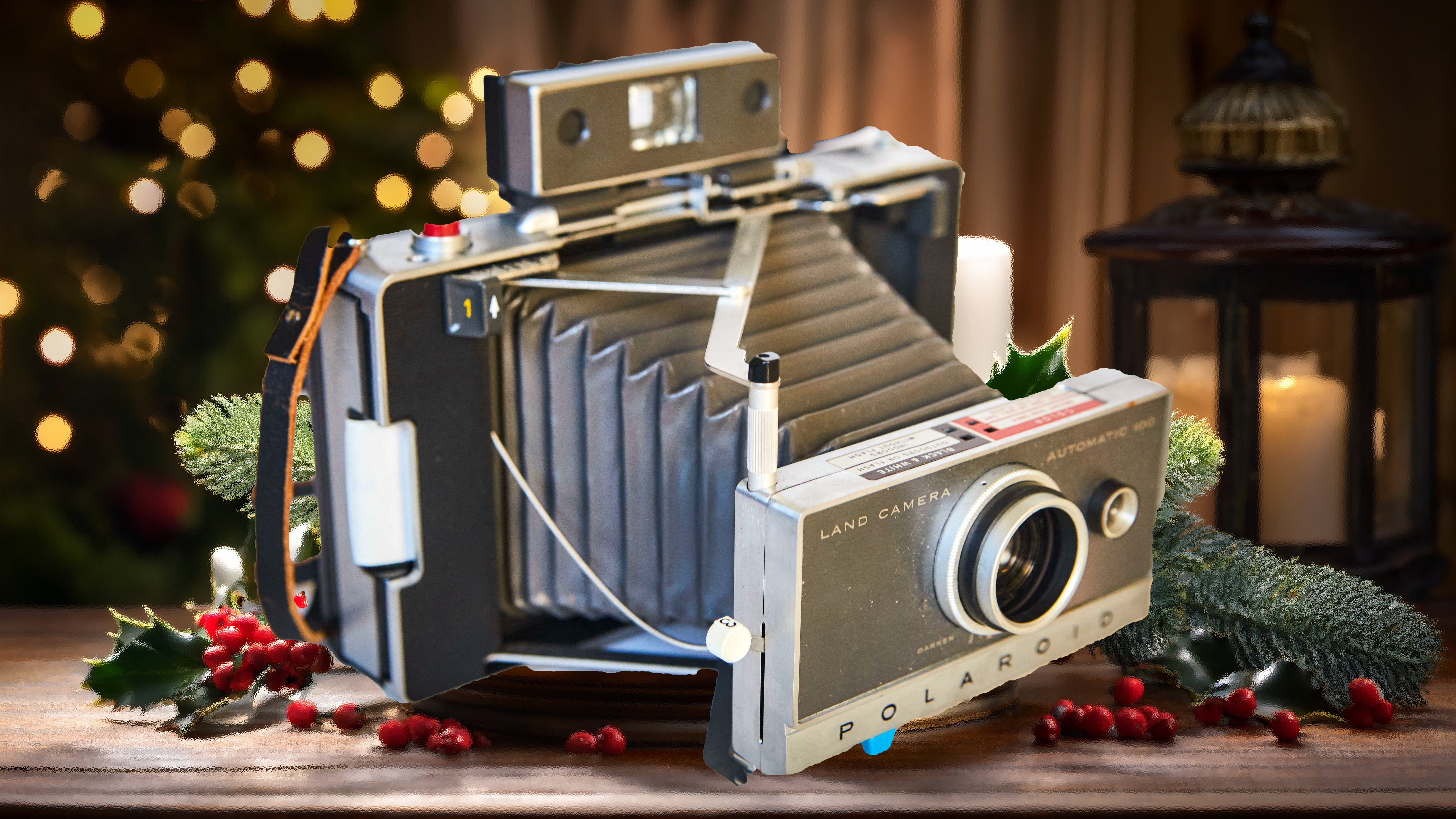The best video tripods in 2025: camera supports for shooting movies smoothly
A video tripod needs to offer both an ultra-stable support and smooth movement, and here's my pick of the bunch to suit everyone from students to pro filmmakers
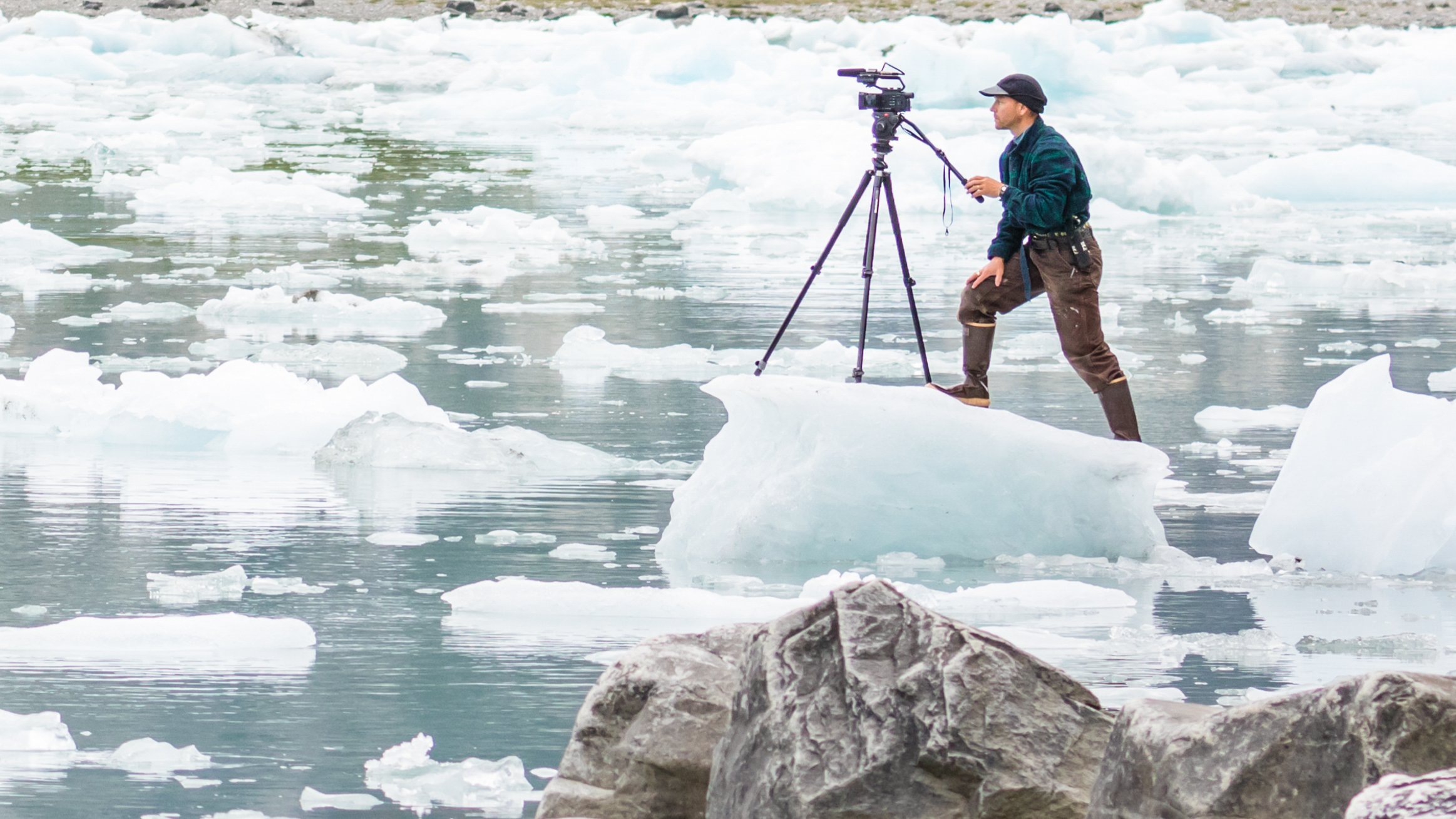
When shooting stills, I’m generally trying to capture a scene in a single shot or aiming to nail a definitive moment in time. I want a tripod that’s rock steady and won’t budge. Video is a whole different ball game. It's all about moving pictures, and movement is often the key ingredient. I’ll want to pan and tilt at will, to track the action. That means I’ll need a fluid head that lets me move the camera smoothly, giving my footage a dynamic, cinematic quality. Whether you're a vlogger or a filmmaker, a dedicated video tripod is one of the wisest, most effective investments you can make.
Not just different by design in the way they work, video tripods also tend to have longer top plates than photographic ones, giving more versatility in positioning and balancing the camera. Another common feature is a counterbalance system that makes it easier to keep things on the level, and additional threaded sockets for attaching accessories like a mic, light, or monitor. Some also have leg-spreaders for extra stability and spirit levels for perfectly straight horizons. Check out our rundown of 7 ways video tripods are different from regular ones for a more thorough look at the key differences.
There are a multitude of options for different types of users, from vloggers who want a lightweight solution to bigger, more stable options for filmmakers with heavy payloads. I’ll also be catering to different budgets, so whether you're just starting your filmmaking journey or you're an experienced filmmaker, these are the best video tripods you can buy right now.

Adam is a photography journalist who loves dabbling with video and has handpicked the best tripods, heads, and related accessories for this guide.
The Quick List
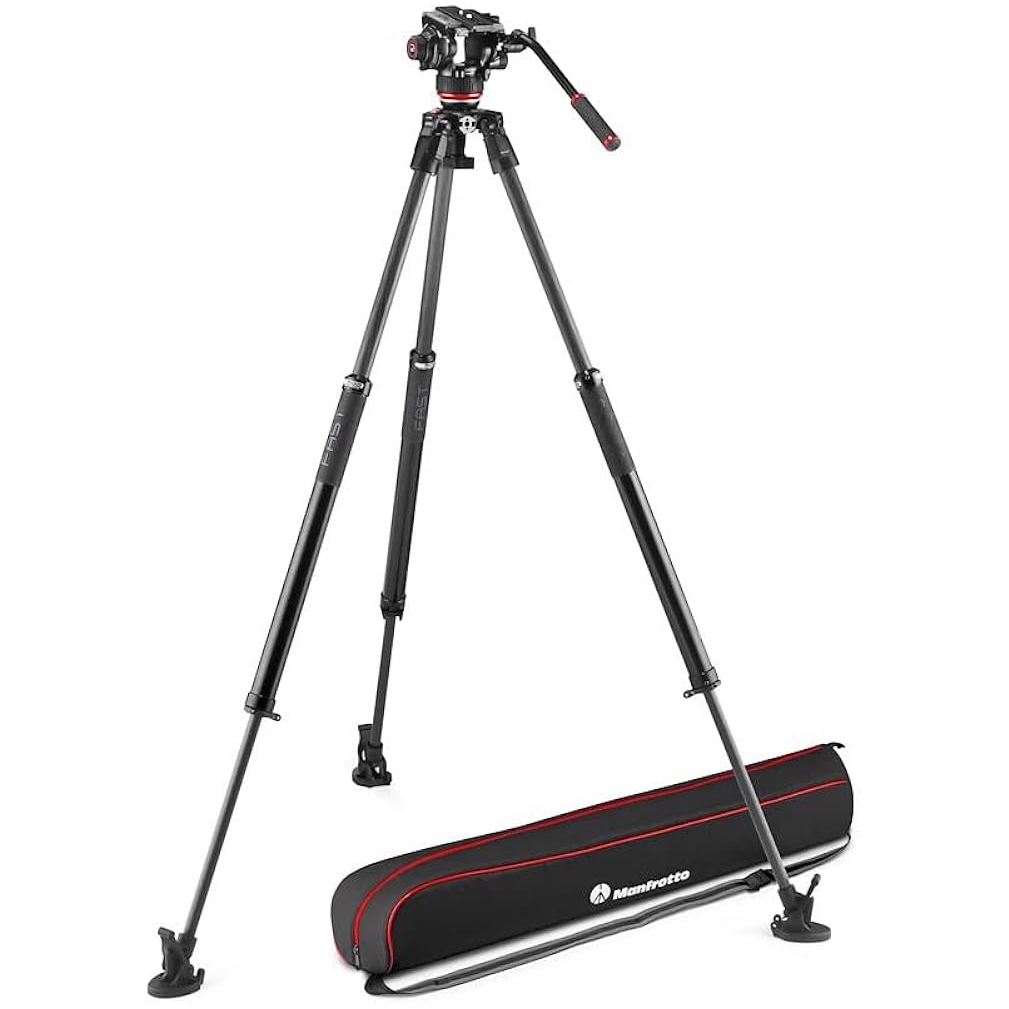
This Manfrotto video tripod works a treat. It's quick and easy to use, beautifully engineered and should last a lifetime. It's not the cheapest option but does the job brilliantly.
Read more below
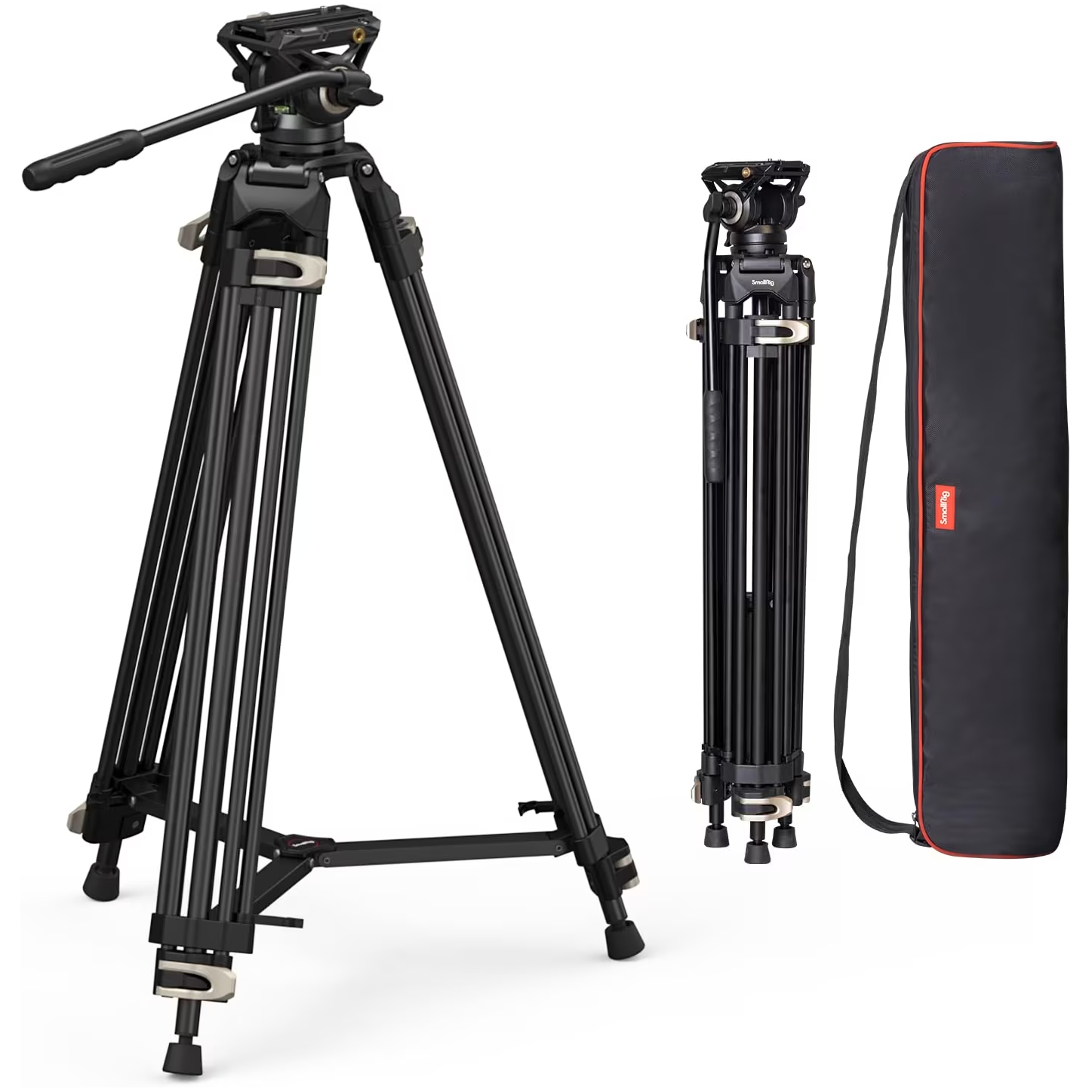
SmallRig has been making a name for itself in producing quality items with small price tags. This video tripod packs plenty of features and is a smart buy for filmmakers on a budget.
Read more below
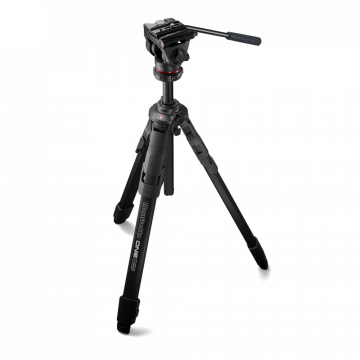
Why buy separate photo and video tripods when the Manfrotto One hybrid tripod can do both? It has a center column that extends and rotates like a stills tripod topped with a video tripod-style leveling platform.
Read more below
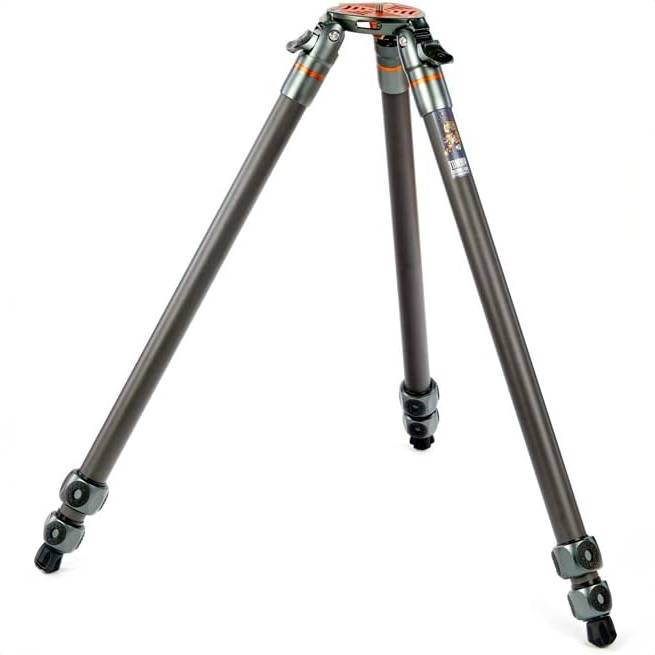
If you want a great tripod base that's built to last and holds a massive 60kg payload, this is the best option for all kinds of cinema rigs (but you'll need to buy the head separately).
Read more below
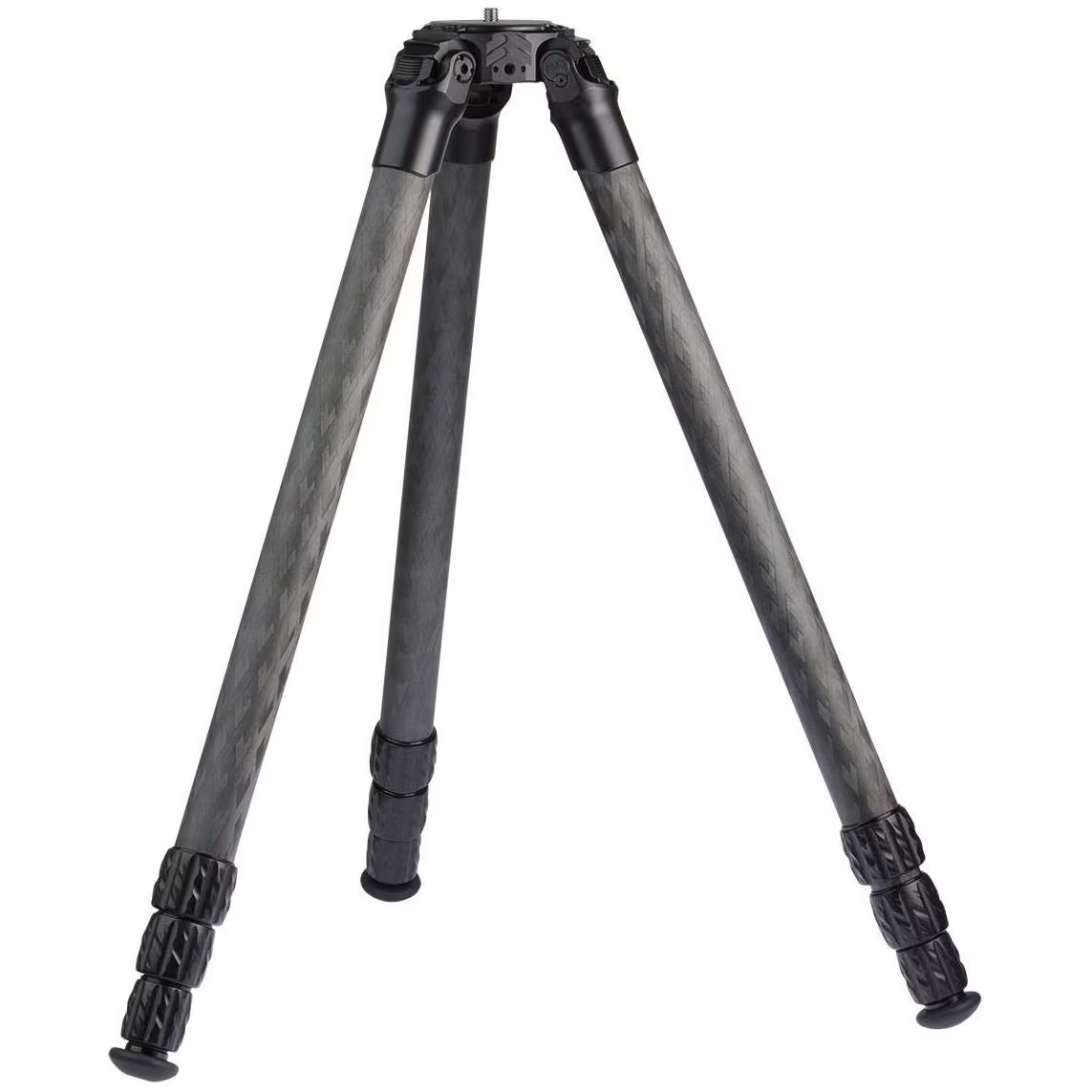
If you're looking for a lightweight setup to attach your fluid head to, carbon fiber is the way to go. The ProMediaGear TR344L offers a lightweight and luxurious solution, if on the pricey side.
Read more below
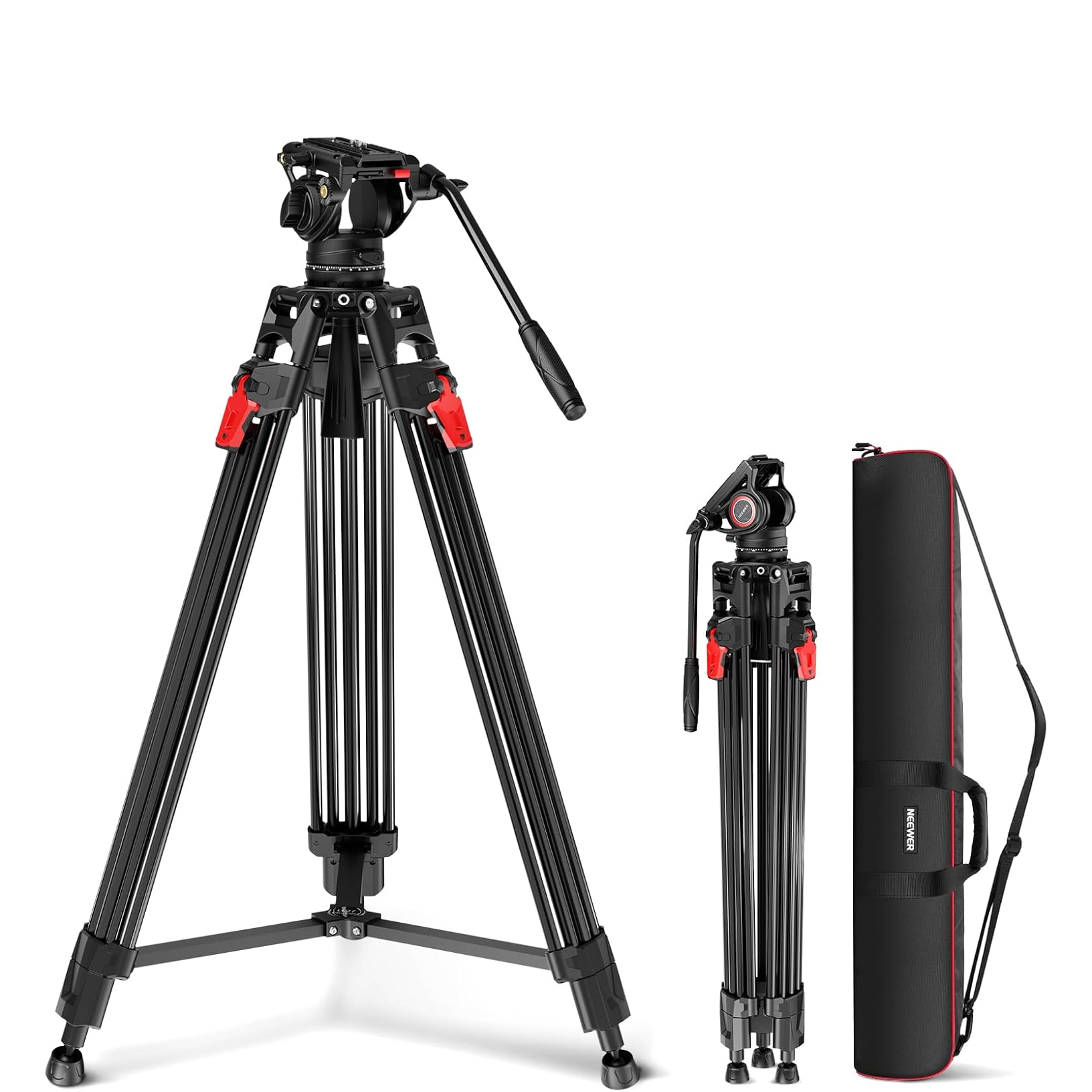
Students need to be careful with cash – and they aren't the only ones. If you need to stick to a budget but still want a good-quality video tripod, this Neewer offers all the essentials at a great price.
Read more below
Load the next products ↴
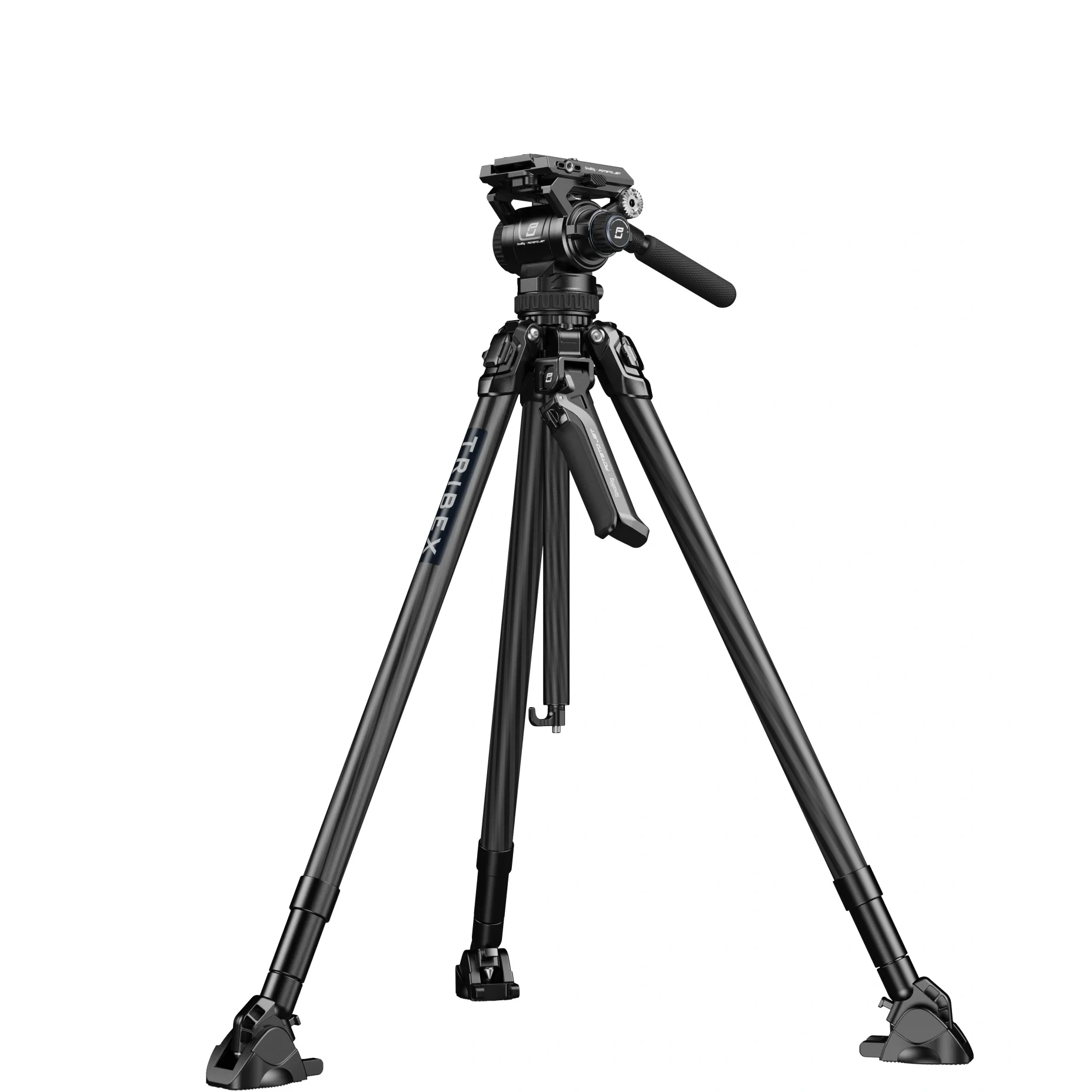
This colab between SmallRig and YouTuber Potato Jet boasts a unique hydraulic leg-locking lever that will have you set up and shooting in seconds…
Read more below
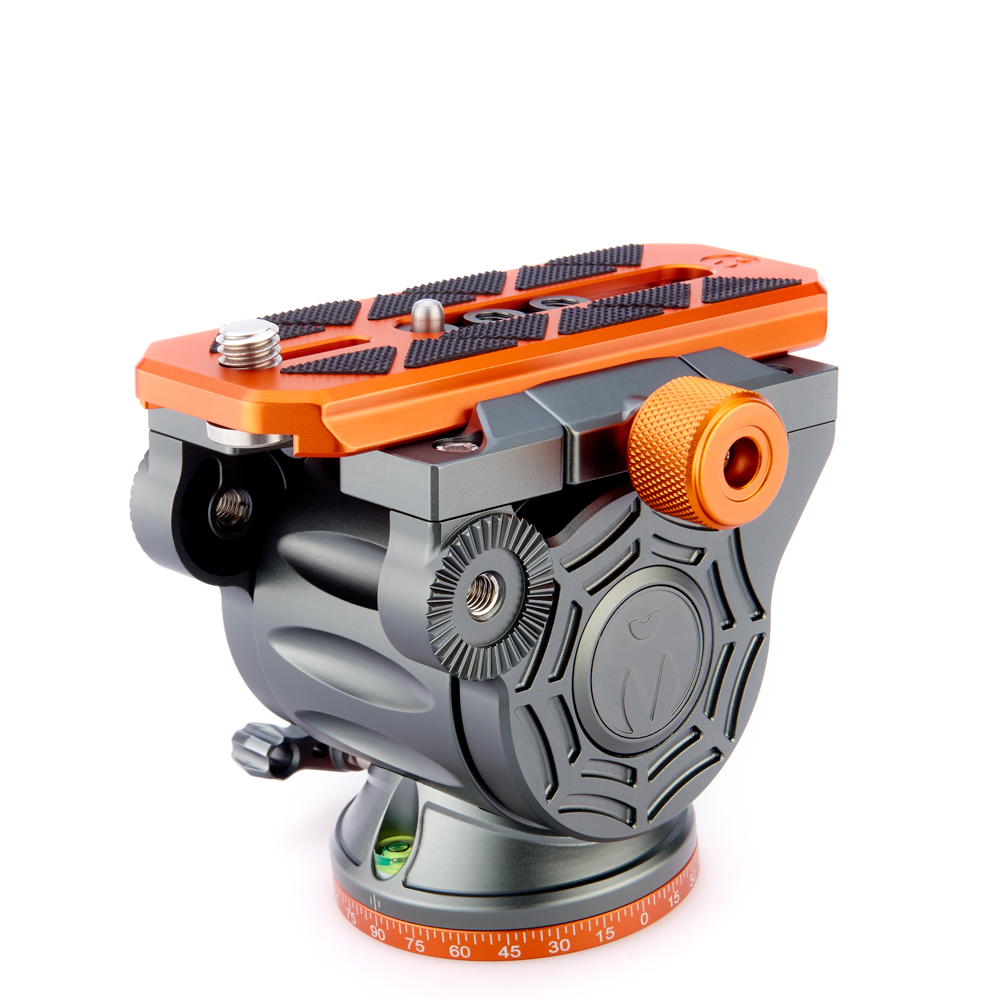
This lightweight yet durable magnesium alloy fluid head for videography offers smooth, adjustable pan and tilt with a 10kg payload capacity and Arca Swiss compatibility for professional results.
Read more below

3 Legged Thing's LevelHed is a robust, easy-to-use leveling base for tripods, simplifying setup for photographers and videographers, with smooth panning.
Read more below
The best video tripod
Why you can trust Digital Camera World
Best overall
Specifications
Reasons to buy
Reasons to avoid
Designed for professional-grade video capture, the Manfrotto 635 Fast Single Leg Carbon Tripod and 504X Fluid Video Head combo has a hefty 12kg load rating but weighs an entirely manageable 5.8kg. The fluidity of the video head is a key feature, ensuring smooth panning and tilting thanks to adjustable pan and tilt drag, and locking knobs for each axis. The pan handle can be attached to either side, and there are accessory sockets and a bubble level, including an illuminated level for use in the dark. The head has a 55mm center of gravity and a 4-position counterbalance system, and connects to a 75mm bowl for easy leveling.
The legs have three carbon fiber sections with wide diameters for rigidity, and can be locked at three angles (20, 50, and 70 degrees) for a maximum operating height of 171cm and a minimum of 44.5cm. Single-twist leg locks make setup quick and easy, and the feet have dual metal spikes and rubber overshoes for use on different surfaces. Constructed from premium-grade carbon fiber and aluminum, the build quality is exceptional, providing rock-solid support with high resistance to flexing and wobbling.
Read our full Manfrotto 635 Fast Single Leg Carbon & 504X head review
Best budget option
Specifications
Reasons to buy
Reasons to avoid
Despite its name, the SmallRig Heavy-Duty Fluid Head Tripod isn't exactly "heavy-duty", with a maximum load of 8kg, making it more suitable for lightweight setups. Key features include three-section double-shaft legs that extend to a maximum height of 1.86m, a fluid two-way ball-head, and a 75mm leveling bowl base for achieving level shots. The legs have quick-release flip leg locks and large rubber feet for stability on various surfaces, and a three-pronged spreader adds stability. There are multiple 1/4-inch threads for attaching accessories. The fluid head design allows for smooth panning, and the tilting position ranges from +90° to -75°. It is compatible with DJI RS 2 and Manfrotto quick release plates, enhancing its versatility.
While the tripod's plastic and aluminum alloy construction may feel less robust compared to higher-end models, it offers a range of advanced features at an affordable price point. It is best-suited for those starting out in videography and filmmaking who need a capable entry-level tripod for mirrorless cameras.
Read our full SmallRig Heavy-Duty Fluid Head Tripod review
Best hybrid
Specifications
Reasons to buy
Reasons to avoid
The Manfrotto One Hybrid Tripod is designed as an all-in-one solution for hybrid content creators who need to switch seamlessly between stills photography and video. Available in both aluminum and carbon fiber versions, it aims to combine the best features of both photo and video support systems.
The center column extends for additional shooting height and can also be rotated 90 degrees for overhead or flat-lay shots. This column is also removable, allowing for extreme low-angle or ground-level shooting. Oval-shaped tripod legs enhance torsional resistance, providing stability for both stills and smooth video panning. A clever XTEND mechanism allows all leg sections to be deployed simultaneously for quick setup, and the modular feet can be swapped to reveal hidden spikes for stability on different surfaces. A leveling feature on the top means that you don't have to ensure the legs are perfectly level, which is essential for video.
Manfrotto's XCHANGE quick-release system allows the tripod head to be quickly swapped with other accessories, such as sliders. It is available as a kit with the perfectly matched 500X Fluid Head, which is central to the system's hybrid functionality. Its hinged plate allows for quick transitions between landscape and portrait orientations without removing the camera. The fluid drag system on the pan and tilt axes ensures smooth, shake-free motion, and a built-in counterbalance system provides additional control. The head also features a 501PL-compatible sliding plate with a side-lock mechanism for quick and secure camera mounting.
Read our full Manfrotto One Hybrid Tripod review
Best legs-only option
Specifications
Reasons to buy
Reasons to avoid
Named after skateboarder and musician Tommy Guerrero, the 3 Legged Thing Tommy is a professional-grade support system engineered to handle heavy cinema rigs with ease, boasting a massive 60kg load capacity while weighing in at a manageable 2.59kg. Build quality is exceptional, combining 8-layer Japanese carbon fiber and aerospace-grade magnesium alloy to create a structure that is both aesthetically pleasing and incredibly tough.
Designed specifically for videography, the Tommy eschews a center column to maximize rigidity. Its thick, 3-section legs – featuring a substantial 38mm maximum diameter – provide rock-solid stability, resisting flex and vibration even at the maximum height of 162.3cm. Chunky twist locks offer smooth, tactile operation, and all three legs are detachable, enabling the hub to be converted into a tabletop tripod for ultra-low angles when paired with optional footwear.
It comes with both a flat plate and a 75mm bowl mount, allowing different head types to be easily swapped. The package is rounded out by a high-quality, padded case that reflects the tripod's premium nature. The price is premium too, but it's a worthy investment for serious filmmakers. should offer a lifetime of dependable performance, justifying its cost through sheer quality and modular versatility. I used the Nicky with the 3 Legged Thing AirHed Cine head. They play really well together!
Read our full 3 Legged Thing Tommy review
Best lightweight
Specifications
Reasons to buy
Reasons to avoid
It's possible to spend a lot of money on a tripod, as demonstrated by the ProMediaGear TR344L. It certainly won't be for everyone, with a four-figure price tag (that doesn't even include a head), ruling out casual users and those on a strict budget, but it really is a top-quality tripod. Constructed from carbon fiber, it weighs just 1.95kg, yet can extend to 180cm and support loads up to a whopping 27kg. It features large grooved twist locks for quick setup, even while wearing gloves, and includes both rubber feet and hidden spikes for varied terrain. A built-in spirit level and a 3/8"-16 mounting stud are standard, as is the flat mounting plate, but there's an optional 75mm bowl head adapter that makes the tripod also ideal for video use.
There's no centre column, but this really isn't necessary due to the tripod's height. Thumb-shaped stops allow for flexible leg positioning, and 1/4"-20 mounting holes accommodate accessories. Overall, it's a supremely durable and easy-to-use tripod, and despite its high price it's a worthwhile investment for dedicated photographers and videographers who need to travel light yet support hefty kit.
Read our full ProMediaGear TR344L Pro-Stix review
Best for students
Specifications
Reasons to buy
Reasons to avoid
The Neewer LL27 is an attractively priced yet well-featured video tripod that comes complete with a fluid head, and is particularly suitable for those on a budget but who demand pro-like features, such as students. It's quick to set up, has a tall maximum height (192cm), and has a sturdy build that can handle a reasonable load rating of 8kg. There are also a couple of sockets with 1/4” threads on the platform to accommodate accessories.
The tripod's legs are constructed from multiple aluminum tubes with single-lock levers for each leg, facilitating speedy height adjustments, while the leveling bowl allows for quick and easy base leveling. The fluid head enables smooth panning and tilting, with a reversible panning handle. A quick-release plate is Arca-Swiss compatible and includes both 1/4" and 3/8” connection screws.
While the Neewer LL27 is not as robust as professional-grade tripods and is prone to vibration at taller heights, it offers a generous feature set and good performance for a very affordable price.
Read our full Neewer LL27 video tripod with fluid head review
Best for quick setup
Specifications
Reasons to buy
Reasons to avoid
A collaboration between SmallRig and YouTuber 'Potato Jet', the Tribex's unique feature is that it uses a hydraulic system that allows for quick and easy setup by releasing all leg sections simultaneously with a single lever. The tripod also includes a fluid head for smooth tilting and panning, a counterbalance adjuster, and a simple lever for switching between different types of quick-release plates.
It certainly achieves its goal of speeding up and easing setup; however, achieving absolute levelness is more challenging when compared to tripods with traditional leveling systems. The hydraulic system also has a slight delay in locking the legs, requiring the tripod to be held in position for a moment longer than expected. While the tripod is compact and lightweight, with a good operating height range, it is a little lacking in rigidity and more prone to vibration, especially at maximum height. But it's reasonably priced for an up-market carbon fiber video tripod, making it a good value considering its features and design.
Read our full SmallRig x Potato Jet Tribex review
Best video head
Specifications
Reasons to buy
Reasons to avoid
A professional-grade fluid video head, the 3 Legged Thing AirHed Cine offers the smooth and precise camera movements that filmmakers demand. It's constructed from aircraft-grade magnesium alloy, making it both lightweight and durable. The head features a 75mm bowl base for easy leveling and supports a maximum payload of 10kg, suitable for a wide range of cameras and lenses. Key features include adjustable pan and tilt drag to customize resistance for different shooting styles, a built-in counterbalance system to ensure smooth and balanced camera movements, and a long Arca Swiss-compatible quick-release plate for secure and easy camera mounting.
While the AirHed Cine is primarily designed for video, it can also be used for stills photography, particularly for panoramic shots or when precise camera movements are required. Overall, it's a top-of-the-line fluid head that delivers exceptional performance, making it a versatile tool for any filmmaker or photographer.
Read our full 3 Legged Thing AirHed Cine review
Best leveling base
Specifications
Reasons to buy
Reasons to avoid
The 3 Legged Thing LevelHed aims to eliminate the time-consuming and often frustrating process of adjusting individual tripod legs to achieve a level base, which is crucial for shooting video or panoramic stills. There's a standard 3/8” threaded socket for tripod attachment, along with an adapter for smaller fixings. It is constructed from aerospace-grade magnesium alloy, ensuring both robustness and a lightweight build, and comes in two colors: Metallic Slate and matte black.
It has a smooth and simple leveling mechanism and an intuitive panning lock. Its top section tilts up to 10 degrees in any direction, controlled by a ratcheted knob. A swiveling bubble level aids in accurate leveling, and a separate knob enables 360-degree panning. A unique feature allows direct camera attachment to the LevelHed, bypassing the need for an additional tripod head when shooting video or panning stills, but it's also compatible with fluid heads for movie shooting. All in all, the LevelHed significantly speeds up and simplifies tripod leveling. It is cleverly designed, well-engineered, durable, easy to use, and offers good value for money, making it a valuable tool for photographers and videographers.
Read our full 3 Legged Thing LevelHed review
How to choose a video tripod
So why would you need a specialized video tripod, and won’t your regular photography tripod do the job? A standard tripod’s main function is to be a rock-solid support to keep the mounted camera perfectly still for the length of an exposure. This will usually mean that it is untouched by the photographer once the shutter is fired (and even then, this is ideally done with a remote to minimize the chance of jogging the camera). A video tripod, by contrast, needs to support a camera that will be constantly operated by a videographer and manipulated to follow subjects, panned, and zoomed to record a moving image smoothly. Here are the main things to look out for:
Fluid head
This specialist head uses a fluid-filled chamber that provides resistance to allow for smooth panning and tilting to give the steady, controlled movements that are essential for professional-looking footage. Adjustable drag controls determine the amount of resistance, and the head movement is usually controlled by a locking arm that can be used single-handedly.
Load capacity
The mirrorless camera at the heart of your video setup may not weigh that much, but add on long pro lenses, follow-focus rigs, monitors, and all the other paraphernalia that recording video entails, and the pounds soon pile up. Not only does the tripod have to support all that, but it needs to do so while panning and tilting the whole setup smoothly.
Operating height
You may need to shoot above crowds or get low to the ground for macro work, so minimum and maximum heights are important. An extending center column may give you an extra height boost, but be aware that the higher this extends, the wobblier things get. To get extremely low to the ground, you might want a separate ‘hi-hat’ mini tripod, or a set of video legs that transforms to this.
Leveling bowl
With a regular tripod, the camera is leveled by adjusting the tripod legs, but with video work, a leveling bowl atop the tripod enables quick and easy adjustments as you shoot. It consists of a bowl-and-ball mechanism that allows for far more precise leveling than adjusting the legs individually, and is typically available in 75mm, 100mm, and 150mm sizes – the bigger sizes support greater loads but also are heavier and come at a higher cost.
Spreaders
Spreaders provide a further connection between the tripod legs and offer additional stability with heavier rigs. They come in ground and mid-level versions: ground spreaders are exclusively used in studio environments with a flat floor, while mid-level spreaders are suited to uneven terrain and are ideal for location shooting.
How we test video tripods
We test and review at Digital Camera World by subjecting photo and video equipment to a range of in-house lab tests and in-the-field shooting exercises, designed to give us a thorough sense of how a piece of gear performs. For video tripods, we check stability, ease of setup, smoothness of operation, portability and height range, and use our findings to inform our comments in buying guides like this one.
The best camera deals, reviews, product advice, and unmissable photography news, direct to your inbox!

Prior to joining digitalcameraworld.com as Guides Editor, Adam was the editor of N-Photo: The Nikon Magazine for seven years, and as such is one of Digital Camera World's leading experts when it comes to all things Nikon-related.
Whether it’s reviews and hands-on tests of the latest Nikon cameras and lenses, sharing his skills using filters, tripods, lighting, L brackets and other photography equipment, or trading tips and techniques on shooting landscapes, wildlife and almost any genre of photography, Adam is always on hand to provide his insights.
Prior to his tenure on N-Photo, Adam was also a veteran of publications such as PhotoPlus: The Canon Magazine, so his wealth of photographic knowledge isn’t solely limited to the Big N.
